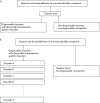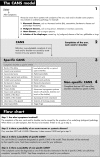Multidisciplinary consensus on the terminology and classification of complaints of the arm, neck and/or shoulder
- PMID: 17043078
- PMCID: PMC2092547
- DOI: 10.1136/oem.2005.023861
Multidisciplinary consensus on the terminology and classification of complaints of the arm, neck and/or shoulder
Abstract
Background: There is no universally accepted way of labelling or defining upper-extremity musculoskeletal disorders. A variety of names are used and many different classification systems have been introduced.
Objective: To agree on an "unambiguous language" concerning the terminology and classification that can be used by all relevant medical and paramedical disciplines in the Netherlands.
Methods: A Delphi consensus strategy was initiated. The outcomes of a multidisciplinary conference were used as a starting point. In total, 47 experts in the field of upper-extremity musculoskeletal disorders were delegated by 11 medical and paramedical professional associations to form the expert panel for the Delphi consensus strategy. Each Delphi round consisted of a questionnaire, an analysis and a feedback report.
Results: After three Delphi rounds, consensus was achieved. The experts reported the consensus in a model. This so-called CANS model describes the term, definition and classification of complaints of arm, neck and/or shoulder (CANS) and helps professionals to classify patients unambiguously. CANS is defined as "musculoskeletal complaints of arm, neck and/or shoulder not caused by acute trauma or by any systemic disease". The experts classified 23 disorders as specific CANS, because they were judged as diagnosable disorders. All other complaints were called non-specific CANS. In addition, the experts defined "alert symptoms" on the top of the model.
Conclusions: The use of the CANS model can increase accurate and meaningful communication among healthcare workers, and may also have a positive influence on the quality of scientific research, by enabling comparison of data of different studies.
Conflict of interest statement
Competing interests: None.
References
Publication types
MeSH terms
LinkOut - more resources
Full Text Sources


